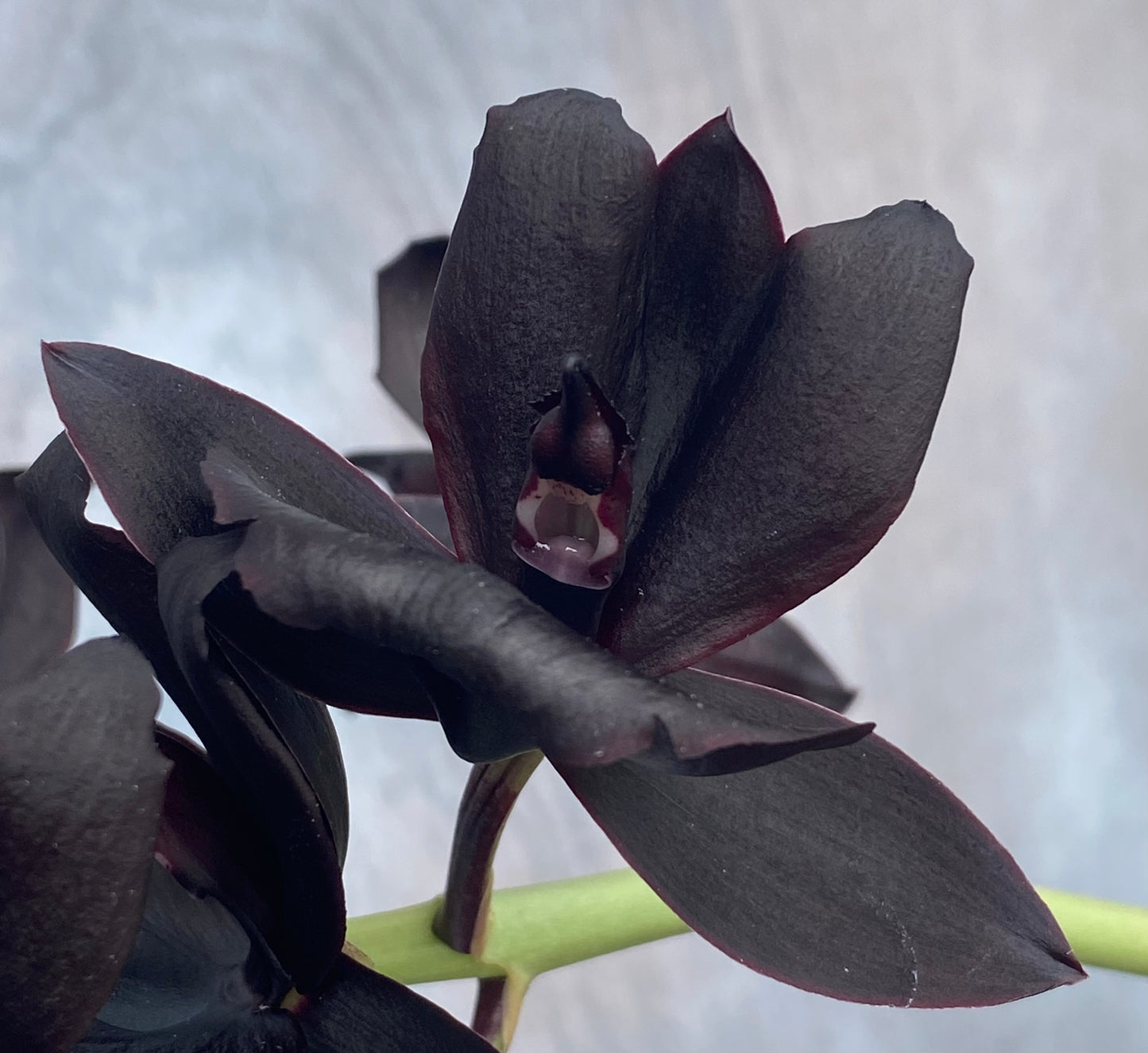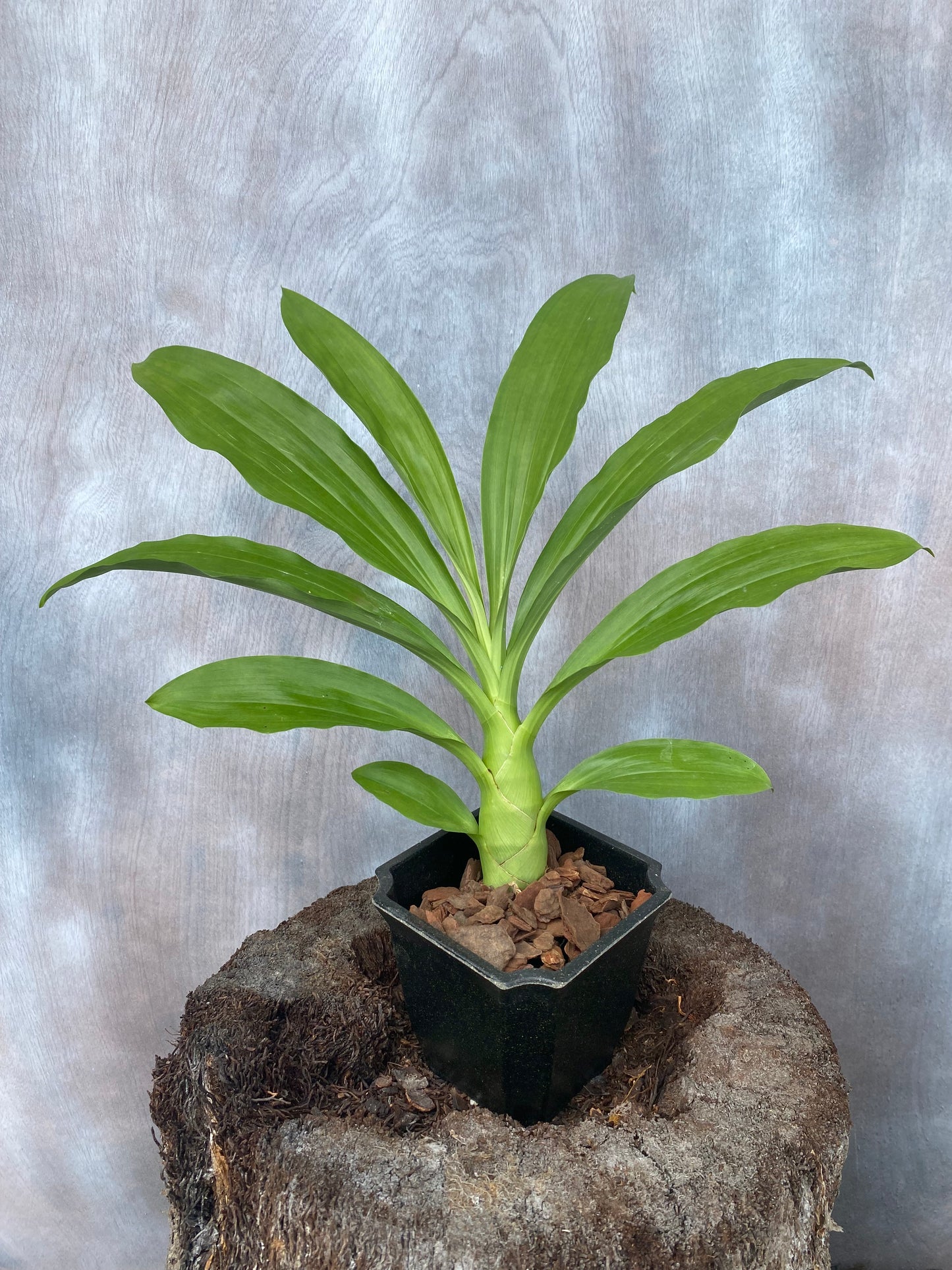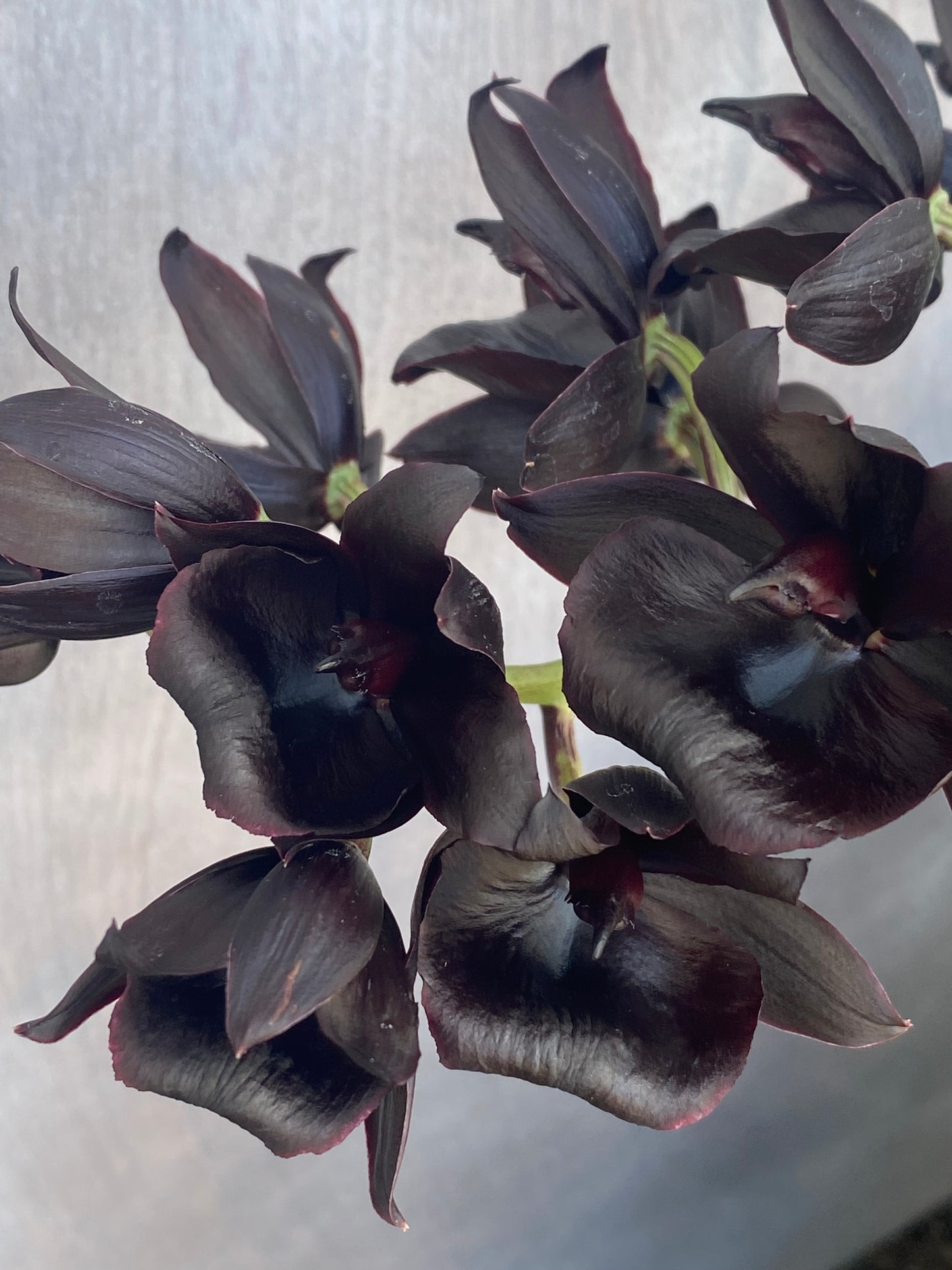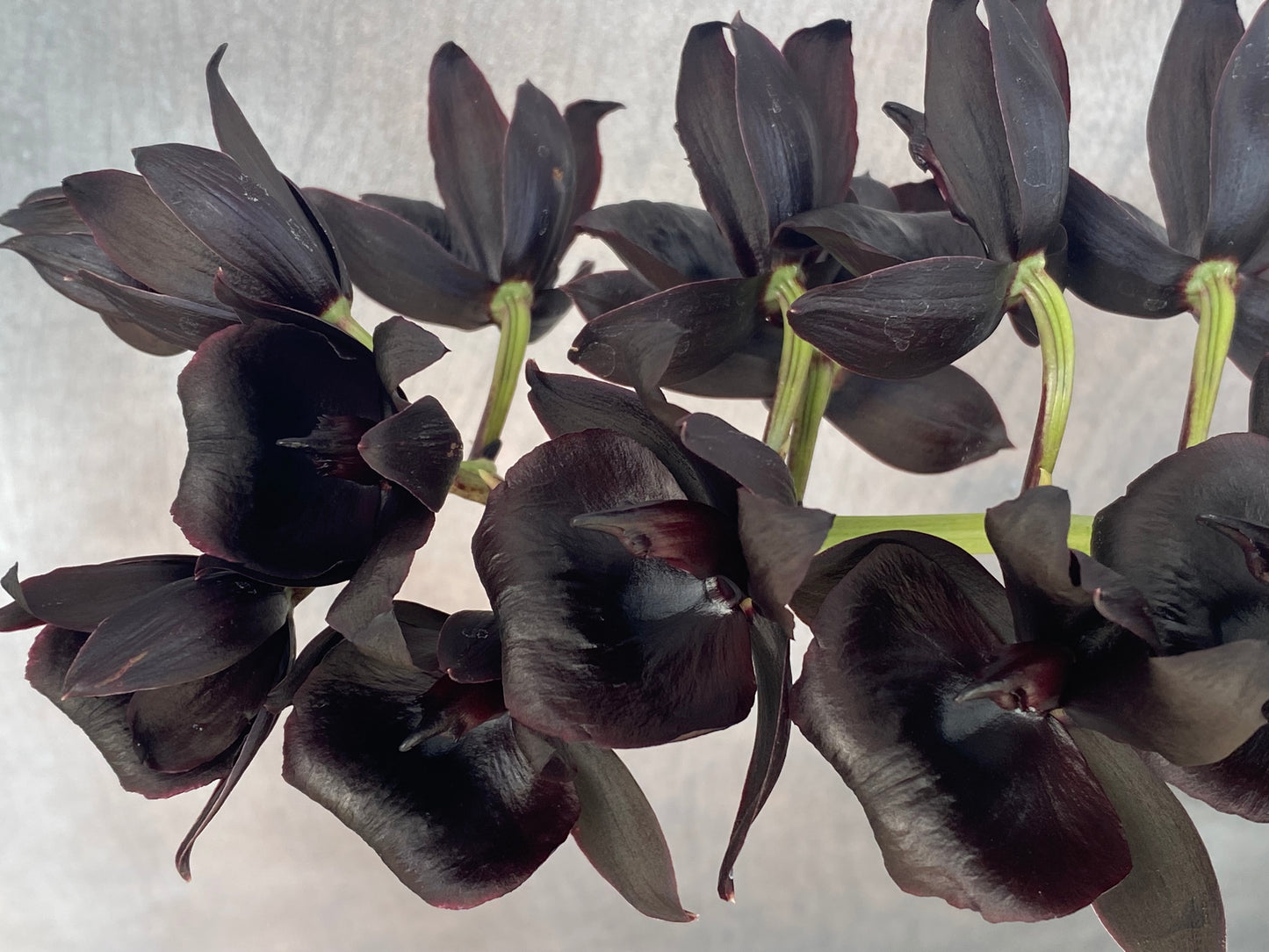Kalapana Orchid Farm
Monnierara Millennium Magic 'Witchcraft' AM/AOS - Black Orchid
Monnierara Millennium Magic 'Witchcraft' AM/AOS - Black Orchid
Couldn't load pickup availability
Monnierara Millennium Magic 'Witchcraft,' the "black orchid," produces flowers so deeply pigmented and velvety that they appear to be cut from the midnight sky itself. It’s the result of botanical alchemy, an orchid that truly stops you in your tracks.
'Witchcraft' is a complex intergeneric hybrid, a combination of three distinct genera: Catasetum, Cycnoches, and Mormodes. This group is often called the Catasetinae alliance. The 'Witchcraft' cultivar is specifically a cross between Cyc. warszewiczii and Ctsm. Midnight Jem. Its family tree is a fascinating map of tropical America, with ancestors hailing from the warm, seasonally dry forests of Brazil, Peru, and Central America.
The key species in its background include:
Catasetum expansum: From the lowlands of Ecuador, this species grows in seasonally dry forests and is accustomed to a distinct wet/dry cycle and warm temperatures.
Catasetum tenebrosum: Native to Peru and Ecuador, it grows in wet, tropical forests at low elevations (650-2,600 ft.), experiencing warm, humid conditions.
Cycnoches warszewiczii: Found in Central America, from Costa Rica to Panama, this "swan orchid" inhabits wet, tropical forests at low to medium elevations, enjoying warm temperatures.
Cycnoches lehmannii: Also a "swan orchid," this species from Ecuador and Colombia grows in hot, humid lowland rainforests.
Mormodes sinuata: Found across a wide range including Panama, Colombia, Ecuador, Peru, and Bolivia, this species is known for its bizarrely twisted, intricate flowers and prefers warm, humid conditions.
The flowers are the main spectacle. They are about 3-4 inches across, with a heavy, waxy substance that gives them an incredible sheen. The color is a profound, uniform burgundy-black, and they possess a wonderfully spicy fragrance, often described as a mix of clove, allspice, and something uniquely medicinal. Adding to the mystique, these plants can produce separate male and female flowers, a fascinating trait of the Catasetinae. The male flowers, which are most commonly seen in cultivation, have a complex, three-lobed lip and a unique trigger mechanism for pollination. The cultivar 'Witchcraft' has received a well-deserved Award of Merit (AM) from the American Orchid Society.
This is a deciduous orchid. Botanically, it produces large, spindle-shaped or cigar-like pseudobulbs that can reach 10-15 inches in height. During the active growing season (typically spring and summer), these pseudobulbs are topped with a crown of large, broad, pleated leaves that give the plant a lush, palm-like appearance. Come fall, after blooming, the plant enters a dormancy period. The leaves will yellow and drop, which is completely normal. The plant rests for the winter, gathering energy for the next explosive round of growth.
Care Instructions
Light: During active growth (when leaves are present), provide very bright, indirect light, similar to what you would for a Cattleya. An east or shaded south-facing window is excellent. During dormancy (when leafless), light can be reduced.
Water: Watering is tied directly to the growth cycle. Water and fertilize heavily when new growth is developing and leaves are present. Once the leaves begin to yellow and drop in the fall, cease fertilizing and reduce water dramatically. During winter dormancy, provide only enough water to keep the pseudobulbs from shriveling excessively—perhaps a light misting or a small amount of water once a month. Resume regular watering only when new growth is well-established, typically 3-4 inches tall with new roots. Watering too early can rot the new growth.
Temperature: It thrives in warm to hot conditions. Daytime temperatures of 80-95°F with nighttime temperatures of 65-70°F are ideal during the growing season.
Humidity: Provide 50-70% humidity during active growth. Good air movement is crucial to prevent fungal issues on the large leaves.
Potting Medium: A moisture-retentive but well-draining medium is best. Fine-grade fir bark, sphagnum moss, or a mix of the two works well. They are heavy feeders, so repotting annually at the start of new growth is recommended.
*Please note, Monnierara Millenium Magic 'Witchcraft' orchids are deciduous--this means their leaves will began to yellow and eventually wither and drop off the bulbs once their growing season is complete. This is a truly fascinating evolutionary strategy deciduous orchids developed in their original environments to endure times of drought and ensure survival. Given proper care and the right growing conditions, this inevitable shift will trigger them to flower. The needs of your plant, including watering, fertilizing, etc., will change depending on whether it's in its growing, flowering, or dormancy phase. We encourage you to read this interesting and informative article regarding deciduous orchids from the American Orchid Society:
https://www.aos.org/orchid-care/orchid-care-basics/deciduous-orchids
Currently offered in blooming size in 3" pots.
Share










